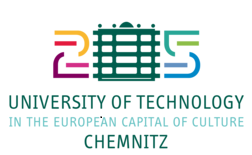Secondary Students’ Metaphors for Learning English
DOI:
https://doi.org/10.71514/jssal/2022.79Keywords:
Metaphor, learning English, secondary students.Abstract
The aim of this study is to find out the perceptions of secondary students about learning the English language through metaphor analysis. The research was carried out with 432 students studying in the 6th, 7th and 8th grades of 6 primary schools in Yozgat city centre. Qualitative method and survey model were used in the study; typical case sampling was used to form the study group. The data of the study were obtained with the data collection tool prepared by the researcher and finalized after expert opinion. In the data collection tool, students were asked to answer a semi-structured question reflecting their thoughts about learning English. The data obtained from the research were analyzed by content analysis method and descriptive analysis techniques were used to analyze the data. As a result of data analysis, metaphors were examined under five themes: challenging, progressive, beneficial, enjoyable, and intangible. The metaphors show that students generally have positive perceptions about learning English. These metaphors are substantial as they provide an in-depth understanding of students’ perceptions and shed light on teachers and curriculum designers
Downloads
References
Akçakaya, N. (2009). The Organization of 8th Grade Learners’ Beliefs Related to Learning English as a Second Language. Unpublished Master Thesis, Gaziantep Üniversitesi, Sosyal Bilimler Enstitüsü, Gaziantep.
Al-Roomy, M. (2015). Evaluating Saudi university students' beliefs about learning English. International Journal of English Linguistics, 5(1), 22. doi:10.5539/ijel.v5n1p22
Alger, C. L. (2009). Secondary Teachers’ Conceptual Metaphors of Teaching and Learning: Changes Over the Career Span. Teaching and Teacher Education, 25, 743-751.
https://doi.org/10.1016/j.tate.2008.10.004
Araiza-Alba, P., Keane, T., Chen, W. S., & Kaufman, J. (2021). Immersive virtual reality as a tool to learn problem-solving skills. Computers & Education, 164, 104121. https://doi.org/10.1016/j.compedu.2020.104121
Aydoğdu, E. (2008). İlköğretim Okullarındaki Öğrenci ve Öğretmenlerin Sahip Oldukları Okul Algıları ile İdeal Okul Algılarının Metaforlar (Mecazlar) Yardımıyla Analizi. Unpublished Master Thesis, Eskişehir Osmangazi Üniversitesi, Fen Bilimleri Enstitüsü, Eskişehir.
Bağçeci, B. (2004). Ortaöğretim Kurumlarında İngilizce Öğretimine İlişkin Öğrenci Tutumları (Gaziantep İli Örneği), XIII. Ulusal Eğitim Bilimleri Kurultayı, İnönü Üniversitesi, Eğitim Fakültesi, Malatya.
Boydell, K. M. & Croguennec, J. (2022). A Creative Approach to Knowledge Translation: The Use of Short Animated Film to Share Stories of Refugees and Mental Health. International Journal of Environmental Research and Public Health, 19(18), 11468. https://doi.org/10.3390/ijerph191811468
Cameron, L. (2003). Challanges for ELT from the expansion in teaching children, ELT Journal, April, Issue 57, Oxford University Press. https://doi.org/10.1093/elt/57.2.105
Cerit, Y. (2006). School Metaphors: The Views of Students, Teachers and Administrators. Educational Sciences: Theory & Practice, 6 (3), 692-699.
Çelebi, M. D. (2006). Türkiye’de Anadil Eğitimi ve Yabancı Dil Öğretimi, Erciyes Üniversitesi Sosyal Bilimler Enstitüsü Dergisi, Sayı: 21 Yıl: 2006/2, 285-307. Retrieved from https://dergipark.org.tr/en/pub/erusosbilder/issue/23754/253119
Chan, J. Y. H. (2018). “Gender and Attitudes towards English Varieties: Implications for Teaching English as a Global Language.” System. Vol. 76, 62-79.
Coşkun, A. (2015). Parents and young learners' metaphorical perceptions about learning English. Journal of Education and Training Studies, 3(5), 231-241. doi:10.11114/jets.v3i5.1015
De Courcy, M. (1997). Teaching and Learning with Different Scripts: Cross-cultural Conflict in a Chinese Late Immersion Classroom, Language and Education, 11:4, 242-259. 10.1080/09500789708666731
Fiedler, S. (2022). English as a lingua franca and linguistic justice: insights from exchange students’ experiences. International Journal of the Sociology of Language, 2022(277), 17-32. https://doi.org/10.1515/ijsl-2021-0075
Fisher, D. & Grady. N. (1998). Teachers’ Images of Their Schools and Perceptions of Their Work Environments. School Effectiveness and School Improvement, Vol. 9, No. 3, 334-348.
Focho, G. N. (2011). Student perceptions of English as a developmental tool in Cameroon. Dreams and realities: Developing countries and the English language, 137-160.
Genç, İ. A., Şahan, S. G., Bal, O. & Köse, E. (2021). Uzaktan Eğitim Sürecinde Yürütülen İkinci Sınıf İngilizce Dersi Öğretim Programının Öğretmen Görüşlerine Göre İncelenmesi. In The Ninth International Congress On Curriculum And Instruction. 4-6 November, 2021. Conference Proceedings.
Girmen, P. (2007). İlköğretim Öğrencilerinin Konuşma ve Yazma Sürecinde Metaforlardan Yararlanma Durumları. Unpublished Doctoral Thesis, Anadolu Üniversitesi, Eğitim Bilimleri Enstitüsü, Eskişehir.
Gordon, W. & Langmaid, R. (2022). Qualitative market research: a practitioner's and buyer's guide. Routledge. https://doi.org/10.4324/9781315245553
Inbar, D. E., (1996). The Free Educational Prison: Metaphors and Images. Educational Research, Vol. 38, No. 1, 77-92. https://doi.org/10.1080/0013188960380106
Jeyaraj, J.J. & Harland, T. (2016). Teaching with critical pedagogy in ELT: the problems of indoctrination and risk, Pedagogy, Culture & Society, 24:4, 587-598, DOI: 10.1080/14681366.2016.1196722
Kimmons, R. & Veletsianos, G. (2018). Public internet data mining methods in instructional design, educational technology, and online learning research. TechTrends, 62(5), 492-500. https://doi.org/10.1007/s11528-018-0307-4
Lakoff, G. & Johnson, M. (1980). Metaphors We Live By. London and Chicago: The University of Chicago Press.
Lawley, J. & Tompkins, P. (2000). Learning Metaphors, SEAL Journal (December), 1-5.
Mao, R., Li, X., Ge, M. & Cambria, E. (2022). MetaPro: A computational metaphor processing model for text pre-processing. Information Fusion, 86, 30-43. https://doi.org/10.1016/j.inffus.2022.06.002
Martin, E. & Lueckenhausen, G. (2005). How University Teaching Changes Teachers: Affective as well as Cognitive Challenges. Higher Education, 49: 389-412. https://doi.org/10.1007/s10734-004-6782-x
Martinez, M. A., Sauleda, N. & Huber, G. L. (2001). Metaphors as blueprints of thinking about teaching and learning. Teaching and Teacher Education, 17, 965-977. https://doi.org/10.1016/S0742-051X(01)00043-9
McLaughlin, H. J. & Bryan, L. A. (2003). Learning From Rural Mexican Schools About Commitment and Work. Theory Into Practice, Vol. 42, No. 4. https://doi.org/10.1207/s15430421tip4204_5
Northcote, M. & Fetherston, T. (2006). New metaphors for teaching and learning in a university context. In A. Bunker, & I. Vardi (Eds.), Critical Visions. Paper presented at the 29th HERDSA Annual Conference, Western Australia, 10-12 July (pp. 251-258). Milperra, Australia: Higher Education Research and Development Society of Australasia. Retrieved from http://www.herdsa.org.au/wp-content/uploads/conference/2006/papers/Northcote.pdf
Oxford, R. L., Tomlinson, S., Barcelos, A., Harrington, C., Lavine, R. Z., Saleh, A. & Longhini, A. (1998). Clashing metaphors about classroom teachers: Toward a systematic typology for the language teaching field. System, 26, 3–50. https://doi.org/10.1016/S0346-251X(97)00071-7
Ozer, S. & Akay, C. (2022). Ortaokul Öğrencilerinin İngilizce Öğrenme Zorlukları: Bir Durum Çalışması. Gazi Üniversitesi Gazi Eğitim Fakültesi Dergisi, 42(1), 711-747. https://doi.org/10.17152/gefad.949137.
Parzysz, B., Pesci, A. & Bergsten, C. (2005). The role of metaphors and images in the learning and understanding of mathematics. In Fourth Congress of tha European Society for Research in Mathematics Education (pp. 67-70).
Philips, S. (2001). Young Learners. Hong Kong: Oxford University Press.
Polat, S. (2020). Multidimensional analysis of the teaching process of the critical thinking skills. Research in Social Sciences and Technology, 5(2),134-157.doi.org/10.46303/ressat.05.02.8
Pramling, N. (2010). Unearthing Metaphors: Figurativeness in Teacher-Child Talk About Soil and Related Matters. Early Childhood Education, 38, 57-64.
https://doi.org/10.1007/s10643-010-0386-0
Saban, A. (2008). Primary School Teachers’ and Their Students’ Mental Images About the Concept of Knowledge. İlköğretim Online, 7 (2), 421-455.
Saban, A. (2010). Prospective Teachers’ Metaphorical Conceptualizations of Learner. Teaching and Teacher Education, 26, 290-305. https://doi.org/10.1016/j.tate.2009.03.017
Sangasubana, N. (2011). How to conduct ethnographic research. Qualitative Report, 16(2), 567-573.
Senemoğlu, N. (2009). Gelişim, Öğrenme ve Öğretim, Kuramdan Uygulamaya (14. Ed.). Ankara: Pegem Akademi.
Shaw, D. & Andrei, E. (2020). Pre-service teachers’ metaphors of learning and teaching English as a second language. Multicultural Learning and Teaching, 15(1). https://doi.org/10.1515/mlt-2018-0007
Soylu, B. A. (2008). İngilizce Öğretiminde İşbirlikçi Öğrenme Yönteminin İlköğretim 6. Sınıf Öğrencilerinin Akademik Başarılarına Etkisi. Unpublished Master Thesis, Niğde Üniversitesi, Sosyal Bilimler Enstitüsü, Niğde.
Suherman, S. & Vidákovich, T. (2022). Assessment of Mathematical Creative Thinking: A Systematic Review. Thinking Skills and Creativity, 101019. https://doi.org/10.1016/j.tsc.2022.101019
Suzuki, S. & Childs, M.R. (2016). Drawings Reveal the Beliefs of Japanese University Students. In: Gkonou, C., Tatzl, D., Mercer, S. (eds) New Directions in Language Learning Psychology. Second Language Learning and Teaching. Springer, Cham. https://doi.org/10.1007/978-3-319-23491-5_10
Wambach, M. (1986) Teaching a Language (non-mother tongue or mother tongue) to Low Achievers and to Children from Socially Disadvantaged Backgrounds, Western European Education, 18:4, 7-25. 10.2753/EUE1056-493418047
Wang, Y. (2010). Using Communşcative Language Games in Teaching and Learning English in Taiwanese Primary Schools. Journal of Engineering Technology and Education, Vol. 7, No. 1, 126-142.
Yıldırım, A. & Şimşek, H. (2005). Sosyal Bilimlerde Nitel Araştırma Yöntemleri. Ankara: Seçkin Yayıncılık.
Young, M. (2014) What is a curriculum and what can it do?, The Curriculum Journal, 25:1, 7-13. 10.1080/09585176.2014.902526
Zhang, Y. (2010). Cooperative Language Learning and Foreign Language Learning and Teaching. Journal of Language Teaching and Research, Vol. 1, No. 1, 81-83.
Downloads
Published
How to Cite
Issue
Section
License
Copyright (c) 2022 Ahmet Özcan

This work is licensed under a Creative Commons Attribution-NonCommercial 4.0 International License.
The work is made available under the terms of the Public Offer and the Creative Commons Attribution 4.0 International License (CC BY 4.0). This license allows anyone to reproduce, distribute, and adapt the material in any medium or format, including for commercial purposes, provided that proper credit is given to the creator(s) and the original source.












